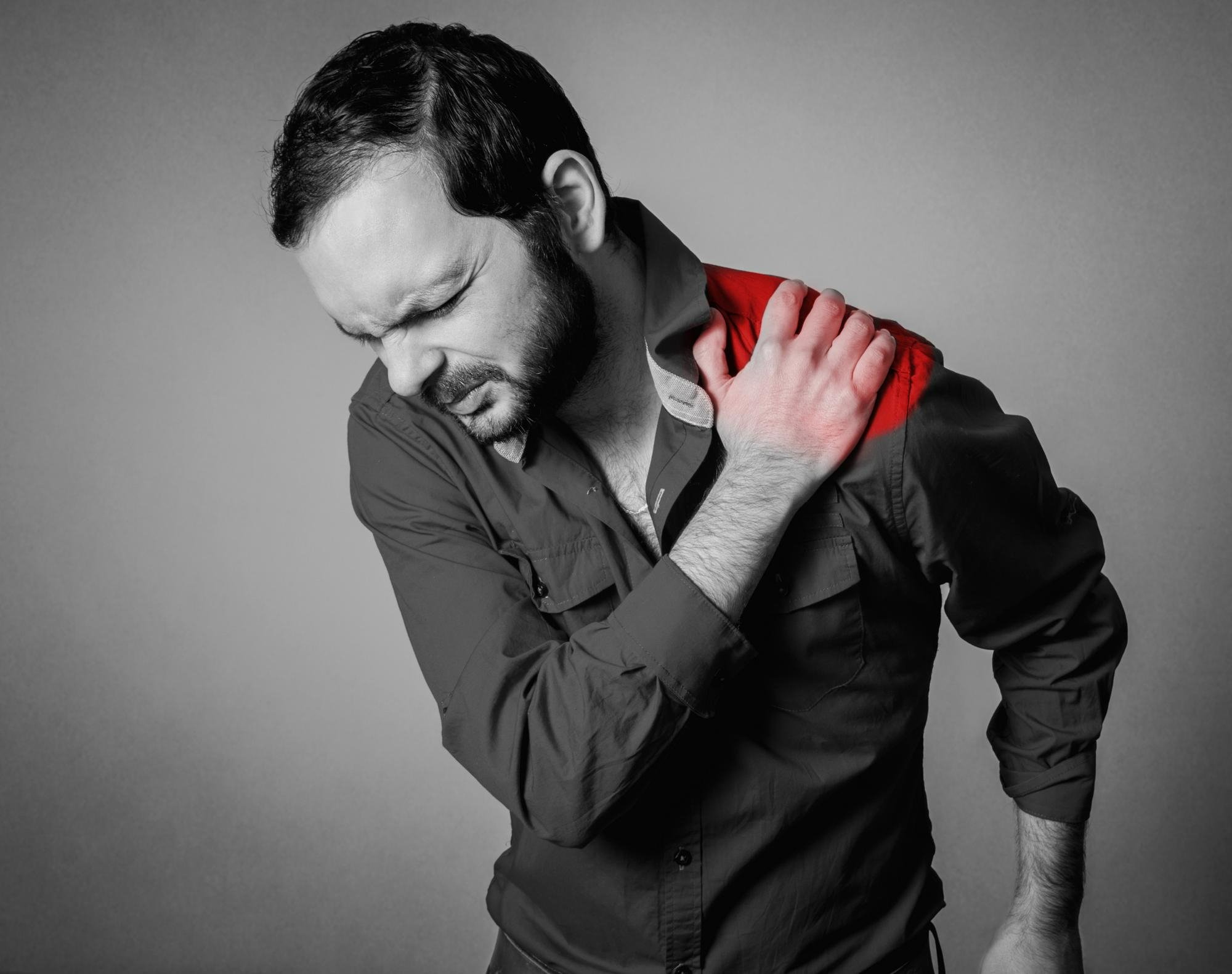Shoulder injuries are a common yet complex issue, particularly when it involves a fracture. Understanding the fastest way to heal a broken shoulder is crucial for athletes and anyone who finds themselves with this debilitating injury. Each year, countless individuals grapple with this question after experiencing trauma from falls, sports, or accidents. What is the fastest way to heal a broken shoulder? This inquiry demands attention because a swift and effective recovery depends on it.
The journey to fast shoulder healing begins with a thorough understanding of the injury’s nature and the best shoulder treatment options available. Heal broken shoulder injuries requires a nuanced approach because the shoulder is not just a single joint but a complex assembly of structures crucial for arm mobility. The faster we initiate proper treatment, the quicker we can hope to see a quick shoulder recovery.
To address what is the fastest way to heal a broken shoulder, one must appreciate the intricacies of shoulder fracture treatment and shoulder healing methods. This article aims to provide comprehensive shoulder recovery tips and insights into fast fracture cure techniques that accelerate shoulder recovery and ensure that the healing is thorough and durable.
Understanding these strategies is the first step towards reclaiming your mobility and quality of life. It is imperative to explore how shoulder injury recovery can be optimized for everyone from the physically active to those experiencing their first major injury.

Types of Shoulder Fractures
A broken shoulder can significantly disrupt daily life, prompting the critical question: what is the fastest way to heal a broken shoulder? Understanding the types of shoulder fractures and their specific challenges is essential to answer what is the fastest way to heal a broken shoulder effectively. The shoulder is composed of three main bones: the clavicle (collarbone), the humerus (upper arm bone), and the scapula (shoulder blade). Each type of fracture may require a different approach in shoulder fracture treatment to accelerate shoulder recovery.
Types of Shoulder Fractures
- Clavicle Fractures: Often caused by a direct blow or falling on an outstretched arm, clavicle fractures are common and can significantly impact shoulder function, making it essential to understand what is the fastest way to heal a broken shoulder in this context.
- Scapula Fractures: These are less common due to the scapula’s protected position but can occur with high-energy trauma and can complicate shoulder injury recovery.
- Proximal Humerus Fractures: These occur near the shoulder joint and are more frequent in elderly populations due to osteoporosis, posing unique challenges in how to heal broken shoulder efficiently.
Common Causes and Risk Factors
What is the fastest way to heal a broken shoulder also depends on the injury’s cause. Common causes include:
- Falls: Falling on an outstretched hand or directly on the shoulder can easily break these bones.
- Motor Vehicle Accidents: High-impact crashes can cause severe shoulder injuries requiring immediate shoulder fracture treatment.
- Sports Injuries: Contact sports or accidents during physical activity can lead to fractures needing rapid shoulder healing.
Risk factors influencing how quickly a shoulder heals include age, bone health, and lifestyle. Older adults may experience slower healing rates due to osteoporosis, highlighting the importance of tailored shoulder rehab tips to ensure fast fracture cure. Active individuals might need specific shoulder rehab tips to heal shoulder fast without compromising future shoulder functionality.
Understanding these aspects is crucial for anyone seeking to heal shoulder fast and effectively. Accelerated healing shoulder techniques and quick shoulder recovery strategies must consider the fracture type and the individual’s overall health and activity level. Shoulder treatment options vary widely, from conservative management with slings and physical therapy to surgical interventions in more severe cases.
Knowing the fastest way to heal a broken shoulder through appropriate healing methods can significantly improve outcomes in shoulder recovery DFW and beyond. This knowledge forms the foundation for implementing effective broken shoulder therapy and ensuring fast shoulder healing.
Initial Steps After a Shoulder Injury

When it comes to what is the fastest way to heal a broken shoulder, the actions taken immediately after the injury can significantly influence the recovery timeline. Immediate and correct first aid not only sets the stage for fast shoulder healing but also prevents complications that could hinder the process.
Immediate Actions Post-Injury
The moment a shoulder injury occurs, the first priority is to assess the situation and stabilize the injury. Here’s what is the fastest way to heal a broken shoulder starting right from the moment of injury:
- Stop any Movement: Cease any activity that could worsen the injury. Understanding what is the fastest way to heal a broken shoulder involves recognizing the need to protect the injured area from further damage.
- Apply Ice: Placing ice on the injured shoulder helps reduce swelling and pain, vital for fast shoulder healing. Ice should be applied for 20 minutes every hour as soon as possible post-injury.
- Immobilization: The use of a sling or a wrap can help immobilize the shoulder, a critical step in what is the fastest way to heal a broken shoulder. This prevents the injured area from moving too much, which could exacerbate the injury and delay quick shoulder recovery.
The Importance of Rest, Ice, and Immobilization
Rest is crucial as it allows the body’s natural healing processes to begin without the interference of further strain. Ice application is a proven method to effectively control swelling, an essential aspect of shoulder injury recovery. Immobilization not only supports the injured structures but also minimizes pain and inflammation, speeding up the rapid shoulder healing process.
Seeking Professional Medical Assessment
What is the fastest way to heal a broken shoulder? Get a professional medical assessment without delay. Prompt evaluation by a healthcare professional ensures an accurate diagnosis, which is essential for determining the appropriate shoulder fracture treatment. Early and accurate diagnosis using imaging like X-rays or MRIs can significantly impact shoulder treatment options and facilitate accelerated healing shoulder.
Professionals can offer immediate shoulder recovery tips and start necessary shoulder fracture treatment that includes pain management and detailed planning for broken shoulder rehab. They will also set expectations for the recovery timeline, offering shoulder rehab tips and guidance on shoulder healing methods that are customized to the individual’s specific situation.
Diagnostic Approaches for Shoulder Injuries
When it comes to what is the fastest way to heal a broken shoulder, accurate and timely diagnosis is paramount. The approach taken by medical professionals to diagnose a shoulder injury heavily influences the shoulder treatment options and ultimately, how quickly the shoulder heals. Understanding the nature and extent of the injury through proper diagnostic tools is the cornerstone of effective shoulder fracture treatment.
Physical Examination
The initial step in diagnosing a shoulder injury is a thorough physical examination. During this examination, doctors assess pain points, range of motion, and signs of swelling or deformity. This helps to hypothesize what is the fastest way to heal a broken shoulder based on the symptoms presented. Palpation and movement tests help to identify specific areas of pain and limitation, which are crucial for tailoring shoulder recovery tips and broken shoulder therapy.
Imaging Techniques
Following a physical exam, imaging techniques are employed to confirm the diagnosis and further clarify the extent of the injury. Here’s how these tools contribute to understanding what is the fastest way to heal a broken shoulder:
- X-rays: This is often the first imaging technique used as it provides clear images of bone structure and helps in identifying fractures. X-rays can confirm the initial assessment or reveal more complex fractures that affect quick shoulder recovery.
- MRI Scans: Magnetic Resonance Imaging (MRI) provides detailed images of both bones and soft tissues, including muscles, ligaments, and tendons. This is crucial when the injury involves not just the bones but also the surrounding soft tissues, which can complicate what is the fastest way to heal a broken shoulder.
- CT Scans: In cases where more detail is needed beyond what X-rays and MRI can provide, CT scans are used to give a more comprehensive view. This is especially helpful in complex fractures where pieces of bone are displaced or when planning surgical shoulder fracture treatment.
The Significance of Accurate Diagnosis
Understanding what is the fastest way to heal a broken shoulder deeply depends on these diagnostic results. An accurate diagnosis helps in planning effective shoulder healing methods, ensuring that the treatment is appropriate for the type of injury sustained. It prevents the complication of misdiagnosis, which can lead to improper broken shoulder rehab and potentially longer recovery periods.
Furthermore, detailed diagnostics help medical professionals anticipate possible complications in the shoulder injury recovery process, allowing them to adjust shoulder rehab tips and shoulder treatment options accordingly. This targeted approach not only aims to accelerate shoulder recovery but also ensures fast recovery shoulder outcomes by addressing all aspects of the injury.

Treatment Options for a Broken Shoulder
When addressing what is the fastest way to heal a broken shoulder, the treatment strategy selected plays a pivotal role. The choice between non-surgical and surgical shoulder treatment options depends largely on the type, location, and severity of the fracture. Each method aims to accelerate shoulder recovery while ensuring the long-term functionality of the joint.
Non-Surgical Treatment Options
For many shoulder fractures, non-surgical methods are the first line of treatment. These are particularly effective when the bones are not significantly displaced:
- Sling Support: Immobilizing the shoulder with a sling helps in maintaining the correct position of the bone during the healing process. This is one of the primary shoulder recovery tips for fast shoulder healing as it reduces stress on the shoulder, allowing natural healing to take place.
- Medication for Pain Relief: Managing pain is crucial, as it allows the patient to perform some light movements to help maintain muscle strength and joint mobility, which are vital for quick shoulder recovery.
- Physical Therapy: Starting with gentle exercises and gradually increasing intensity, physical therapy plays a critical role in shoulder injury recovery. It helps rapid shoulder healing, prevents stiffness, and improves functional outcomes without surgery.
These conservative shoulder healing methods are often recommended for simpler fractures and can effectively lead to fast fracture cure and shoulder recovery DFW without the risks associated with surgery.
Surgical Treatment Options
Surgical intervention may be necessary for complex fractures, especially where there is significant displacement of bone fragments or damage to surrounding tissues:
- Open Reduction and Internal Fixation (ORIF): This procedure involves repositioning the bone fragments into their normal alignment and then securing them with screws, plates, or rods. ORIF is aimed at quick fracture healing by ensuring the bones heal in the correct position.
- Shoulder Replacement: A shoulder replacement might be required in severe cases, especially in older patients with poor bone quality. This involves replacing the broken parts of the shoulder bones with artificial components.
- Arthroscopic Surgery: For less invasive shoulder fracture treatment, arthroscopic techniques may be used. This method involves smaller incisions and can help to heal broken shoulder areas with less impact on surrounding tissues, leading to accelerated healing shoulder outcomes.
When to Consider Surgery
Surgery is considered based on several factors, including the patient’s activity level, age, overall health, and the specific details of the fracture. The decision always aims to balance the benefits of quick shoulder recovery and the risks of operative treatment.
Understanding these shoulder treatment options and their appropriate applications is essential for anyone needing to know what is the fastest way to heal a broken shoulder. Whether through conservative methods or surgical intervention, the goal remains the same: to ensure fast recovery shoulder and restore maximum function to the injured shoulder.

Rehabilitation and Physical Therapy for Shoulder Recovery
When it comes to what is the fastest way to heal a broken shoulder, rehabilitation and physical therapy play pivotal roles. These practices are crucial not only for speeding up the healing process but also for preventing long-term disability and ensuring a return to full functionality. Let’s explore how shoulder rehab tips and structured physical therapy programs can accelerate shoulder recovery.
Phases of Physical Therapy
Physical therapy for a broken shoulder typically progresses through several phases, each designed to take you closer to complete recovery:
- Pain Relief and Passive Motion: Initially, the primary goals are to reduce pain and inflammation while maintaining joint mobility. During this phase, exercises are passive; the therapist moves the arm to keep the joint flexible without the patient using their muscles, which is crucial for fast shoulder healing.
- Active Motion: As pain decreases and healing progresses, the therapy shifts towards active motion. This phase involves the patient actively participating in exercises, which helps regain more shoulder motion. This is an essential step in shoulder injury recovery, facilitating increased blood flow and strength to the injured area.
- Strength Rebuilding: The final phase focuses on strengthening the muscles around the shoulder and improving the functionality of the joint. This stage is vital to heal broken shoulder injuries fully and ensure quick shoulder recovery. Exercises become more rigorous and are designed to bring the shoulder back to its original strength and mobility.
The Role of Physical Therapy in Fast Recovery
Physical therapy is instrumental in what is the fastest way to heal a broken shoulder because it addresses the injury holistically. By customizing exercises and therapy sessions to the individual’s specific needs, physical therapists ensure that each step in the healing process is as efficient as possible. Here’s how physical therapy contributes to rapid shoulder healing:
- Reduces stiffness and increases mobility: Through tailored exercises, therapy helps maintain and gradually improve the range of motion in the shoulder.
- Promotes healing: Targeted movements improve circulation to the shoulder, speeding up the healing process and contributing to fast recovery shoulder outcomes.
- Prevents complications: Regular guided movements prevent the complications associated with immobility, such as joint stiffness and muscle atrophy, which are critical for quick fracture healing.
- Customized rehabilitation: Physical therapists develop personalized rehab programs based on the severity of the injury and the patient’s progress, optimizing shoulder recovery DFW and beyond.
Preventive Measures and Long-Term Care
After navigating the journey of what is the fastest way to heal a broken shoulder, maintaining shoulder health and preventing future injuries is essential. Effective long-term care and preventive measures can accelerate shoulder recovery and ensure that once healed, the shoulder remains strong and functional. Here are key strategies and shoulder recovery tips to safeguard your shoulder’s health and avoid re-injury.
Maintaining Shoulder Health Post-Recovery
Once you have achieved quick shoulder recovery, the focus shifts to strengthening and maintaining the integrity of the shoulder. This involves several shoulder rehab tips:
- Regular Exercise: Incorporating regular, shoulder-specific exercises into your routine is crucial for strengthening muscles and joints. This helps not only to heal broken shoulder areas more effectively but also prevents future injuries by maintaining muscle balance and joint stability.
- Proper Posture: Maintaining good posture is essential for shoulder injury recovery and long-term health. Poor posture can lead to undue stress on the shoulder joints and muscles, potentially causing pain and setbacks in fast shoulder healing.
- Ergonomic Adjustments: Making ergonomic adjustments at work and during daily activities can help protect your shoulder. Whether it’s adjusting the height of your desk, using an ergonomic chair, or being mindful of your shoulder’s position during activities, these changes can significantly impact your ability to heal shoulder fast and maintain shoulder health.
Preventing Future Shoulder Injuries
Prevention is key in avoiding the recurrence of shoulder problems. Here are some preventive shoulder recovery tips that can help:
- Strength Training: Regular strength training exercises specifically designed for the shoulder help build resilience and reduce the risk of future injuries. Strength training is a critical component of shoulder treatment options that contribute to rapid healing and long-term robustness.
- Flexibility and Mobility Exercises: Incorporating flexibility and mobility exercises into your daily routine can improve the range of motion and decrease the likelihood of injuries. These exercises are essential for anyone who has undergone broken shoulder rehab and wishes to avoid future issues.
- Avoid Overuse: Be conscious of activities that strain the shoulder. Limit repetitive motion and take frequent breaks. This is especially important in shoulder recovery DFW where many individuals might return to high-demand jobs or sports.
Lifestyle Modifications
Lifestyle choices play a significant role in what is the fastest way to heal a broken shoulder and in preventing future injuries:
- Balanced Diet: Eating a diet rich in calcium, vitamin D, and protein supports bone health and muscle repair, which are crucial for fast fracture cure and ongoing shoulder strength.
- Adequate Rest: Ensuring you get enough rest is essential for ongoing recovery and health, as sleep is when most of the body’s healing processes are accelerated.
By adhering to these shoulder rehab tips and incorporating these preventive and maintenance strategies into your lifestyle, you can ensure a fast recovery shoulder experience and maintain optimal shoulder health long-term. This comprehensive approach addresses how to heal broken shoulder concerns and sets a foundation for a robust and active lifestyle free from shoulder problems.
Ensuring Complete and Rapid Shoulder Recovery
Lastly, understanding the fastest way to heal a broken shoulder involves a multifaceted approach that includes timely diagnosis, appropriate shoulder fracture treatment, dedicated broken shoulder rehab, and ongoing preventive measures. To accelerate shoulder recovery, it is crucial to combine medical treatment with shoulder rehab tips that encourage fast shoulder healing and rapid shoulder healing.
Key Points for Quick Shoulder Recovery
- Early Diagnosis: Utilizing imaging and physical exams ensures accurate treatment plans are established, which is essential for fast recovery shoulder.
- Appropriate Treatment: Whether opting for surgical or non-surgical shoulder treatment options, each choice should be tailored to the specific type and severity of the fracture to heal broken shoulder effectively.
- Dedicated Rehabilitation: Engaging in physical therapy that progresses from passive movements to strength rebuilding is critical for fast fracture cure.
- Preventive Measures: Implementing lifestyle changes and exercises that strengthen and protect the shoulder can prevent future injuries and enhance shoulder injury recovery.
Continuous Care and Follow-Up
Continual follow-up with healthcare providers is crucial to adjust treatment plans as necessary and ensure the shoulder healing methods are effectively promoting heal shoulder fast outcomes. Monitoring recovery progress helps in making informed decisions that could further quick fracture healing and accelerated healing shoulder efforts.
At Premier Injury Clinics of DFW, we pride ourselves on providing top-notch care tailored to those recovering from shoulder injuries. With a team of experienced professionals dedicated to your shoulder recovery DFW, we ensure that each patient receives personalized treatment and support throughout their recovery journey. Trust us to help you achieve the best possible outcomes and return to your daily activities with confidence and strength.






